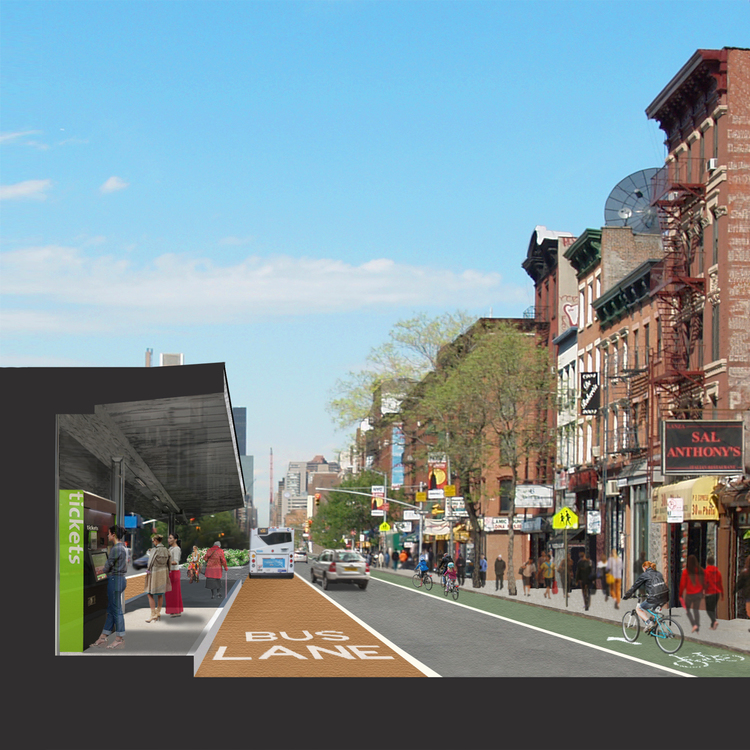
NYC Department of Transportation’s “complete street” redesign of First Avenue—a dedicated bus lane, a pedestrian refuge, and a protected bike lane—carries more people in the same space as a regular avenue. Since they installed it in 2010, biking is up almost 50%, bus speeds are up 18%, bus ridership is up 10%, and traffic injuries are down. New York needs overhauls like this on many more streets in every borough. Queens Boulevard is the classic example of a street that’s dangerous and inefficient because it’s only designed to move cars.
I propose that we re-design our wide, car-centric streets as true transit boulevards. This is a concept that goes beyond the Select Bus Service (SBS) model that the City and MTA have used so far. Painting bus lanes and collecting fares before passengers board have sped up SBS routes, but New York can do better. We need to build a world-class Bus Rapid Transit (BRT) network. Boarding platforms should be located in the center median of major two-way boulevards, sheltered from the elements, and level with bus doors for faster boarding. Bus passengers should get to bypass traffic congestion without getting blocked by double-parked cars or turning motorists.
Other American cities are leapfrogging us. Chicago is moving forward with a true BRT corridor on Ashland Avenue. It will not only serve as a more efficient means of transportation, it will be an economic development tool for neighborhoods underserved by transit. Let’s not fall behind Chicago. Neighborhoods in every borough will have better access to jobs and opportunities if we transform their wide, dangerous streets into pedestrian-friendly transitways.